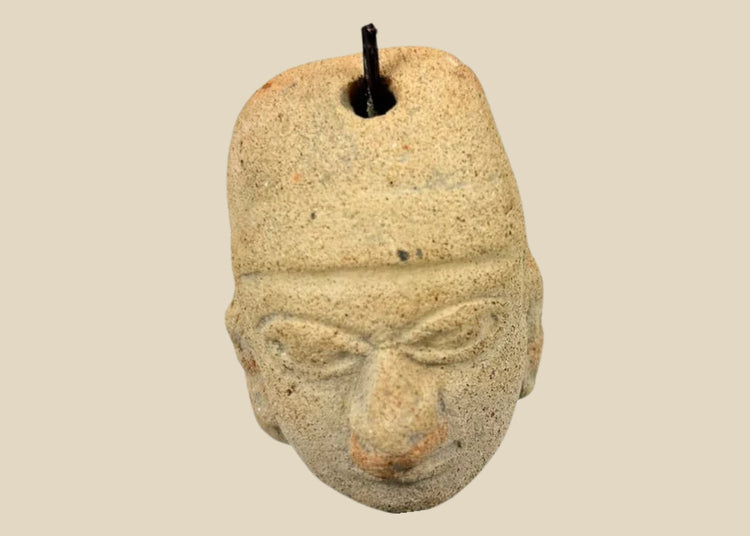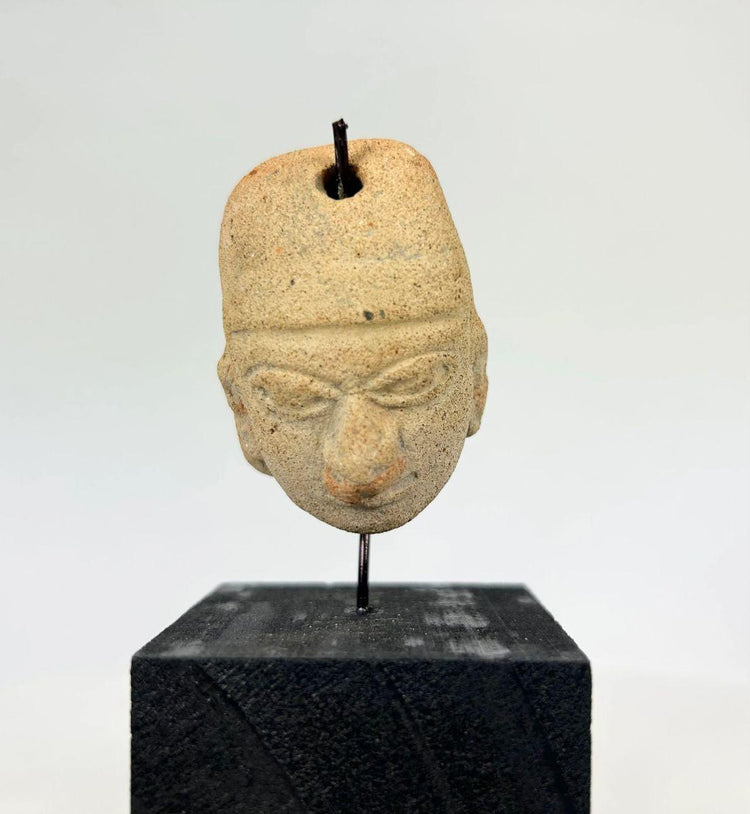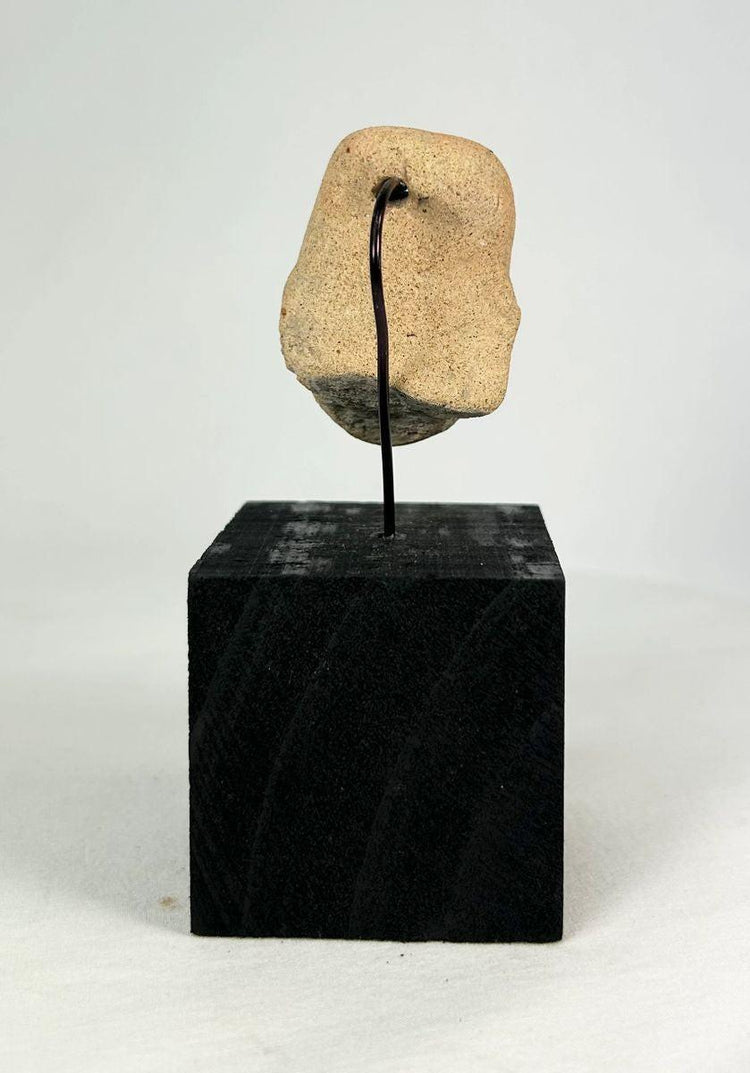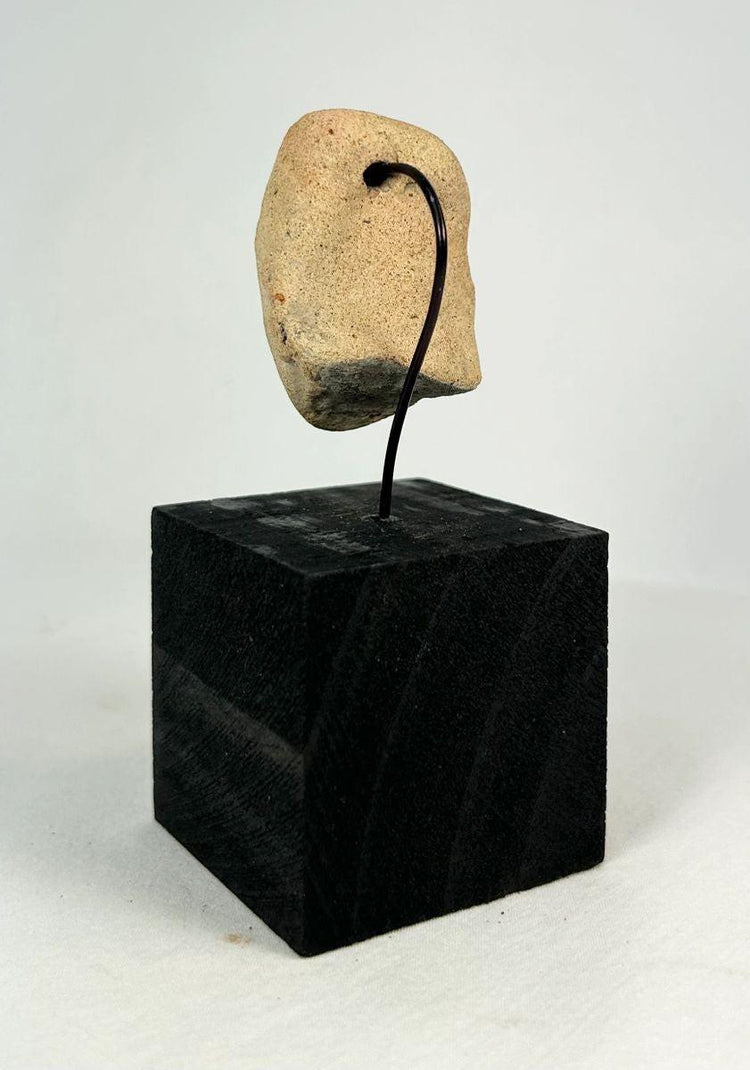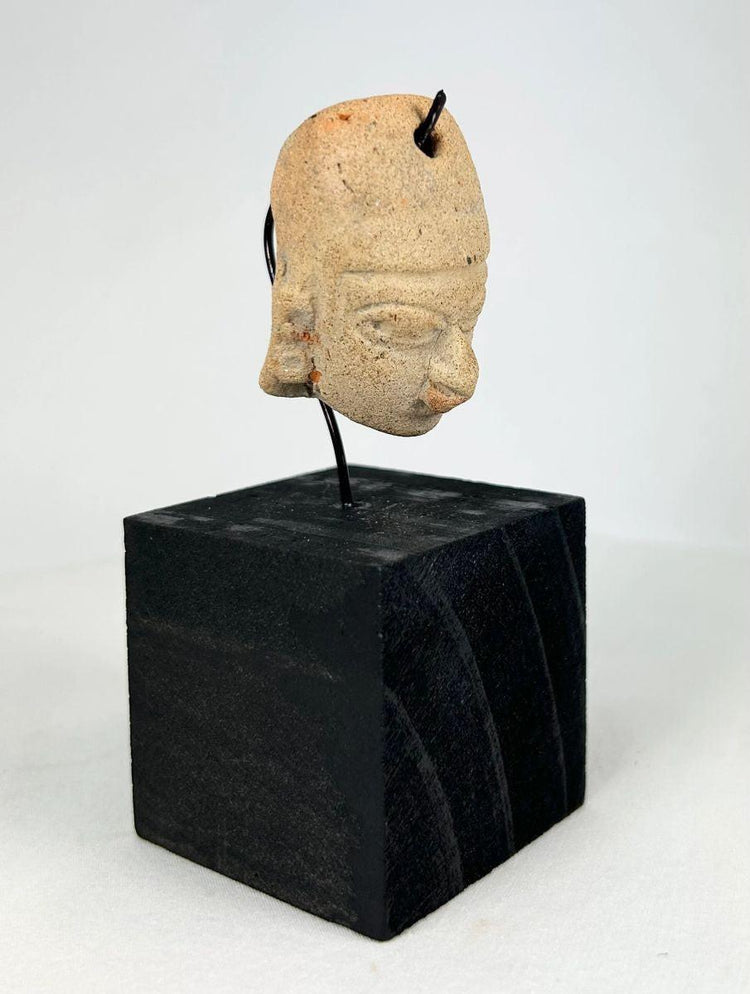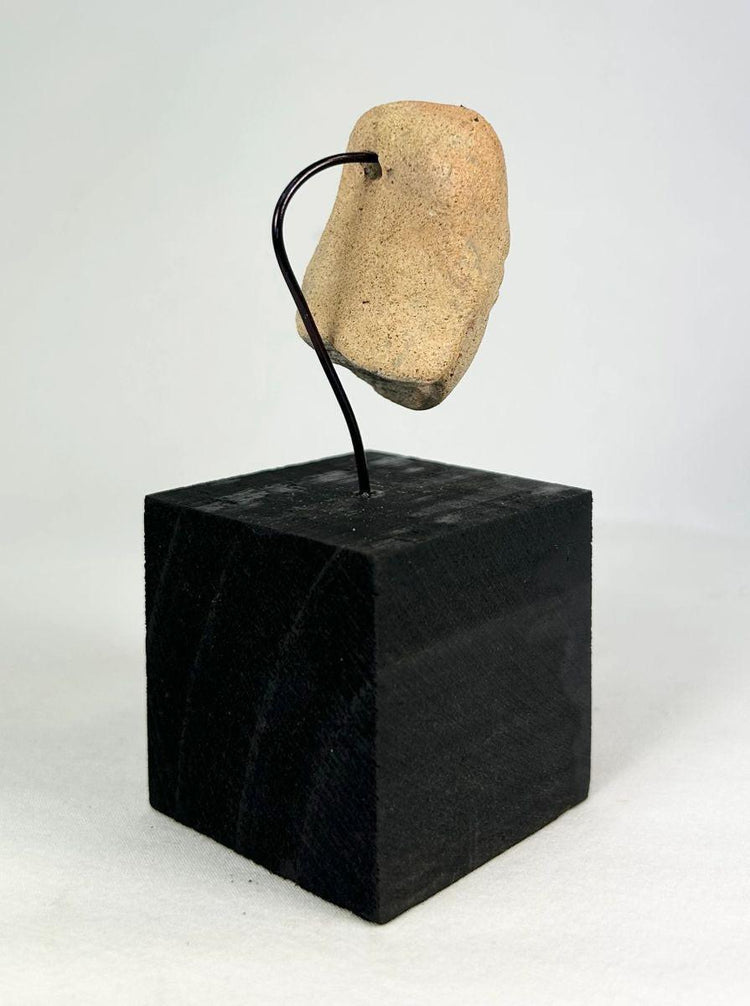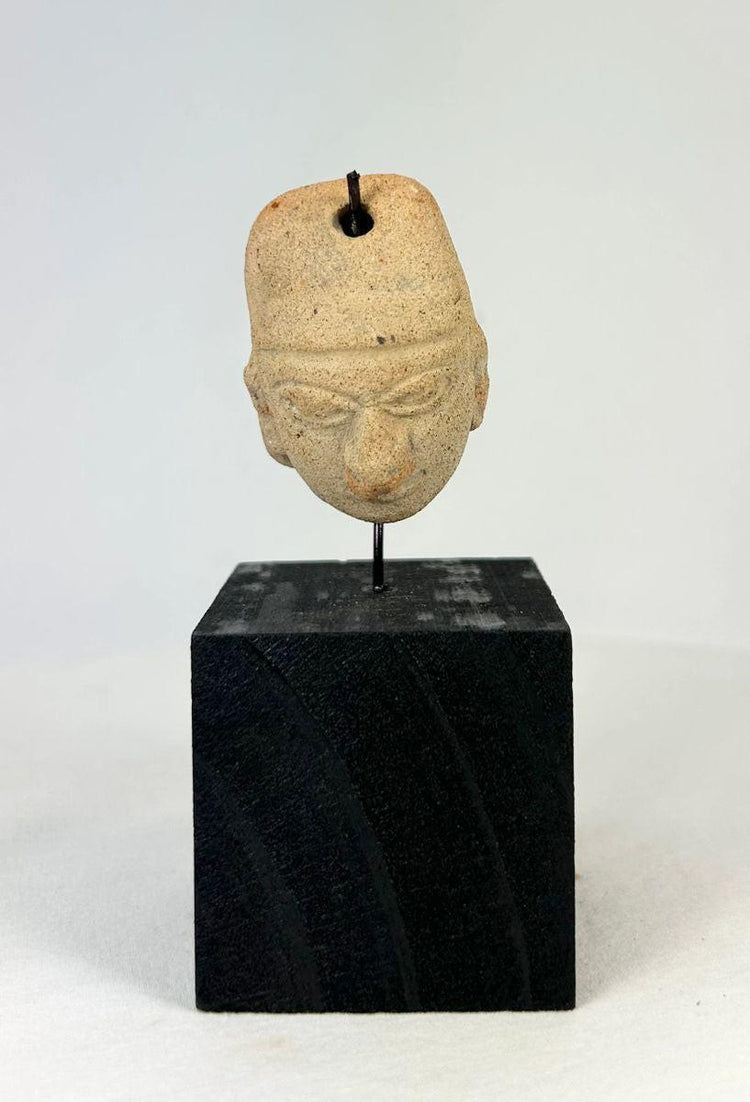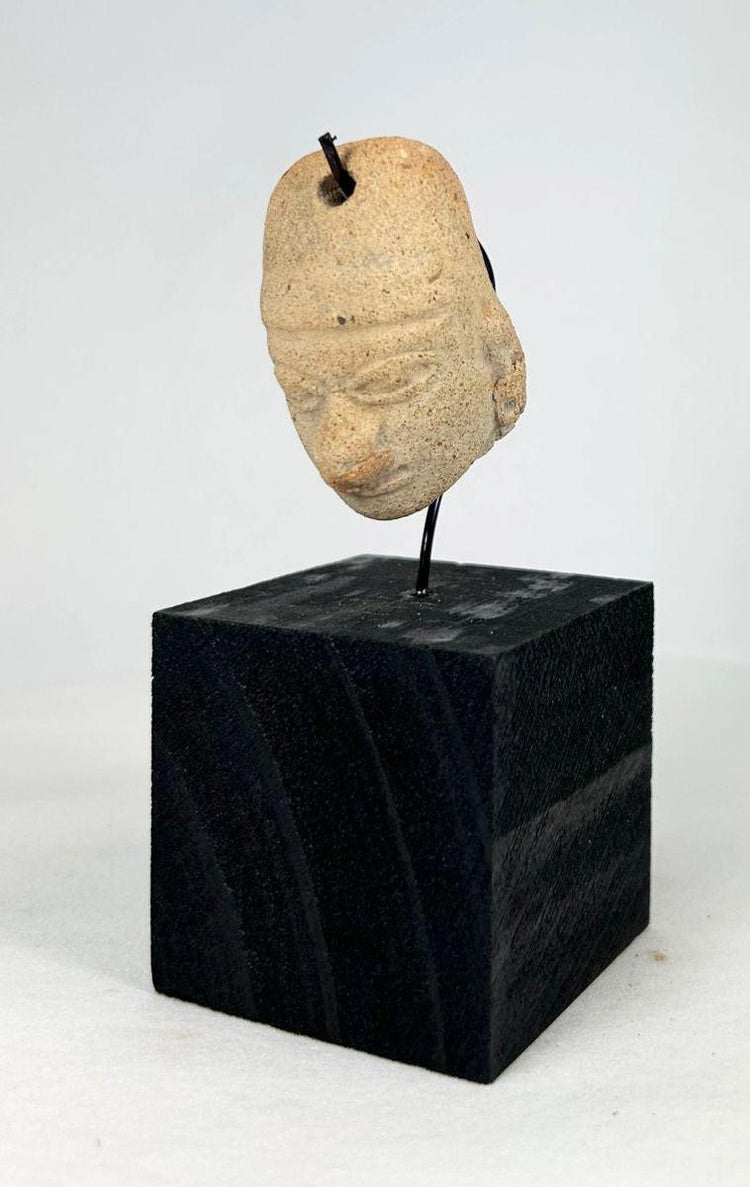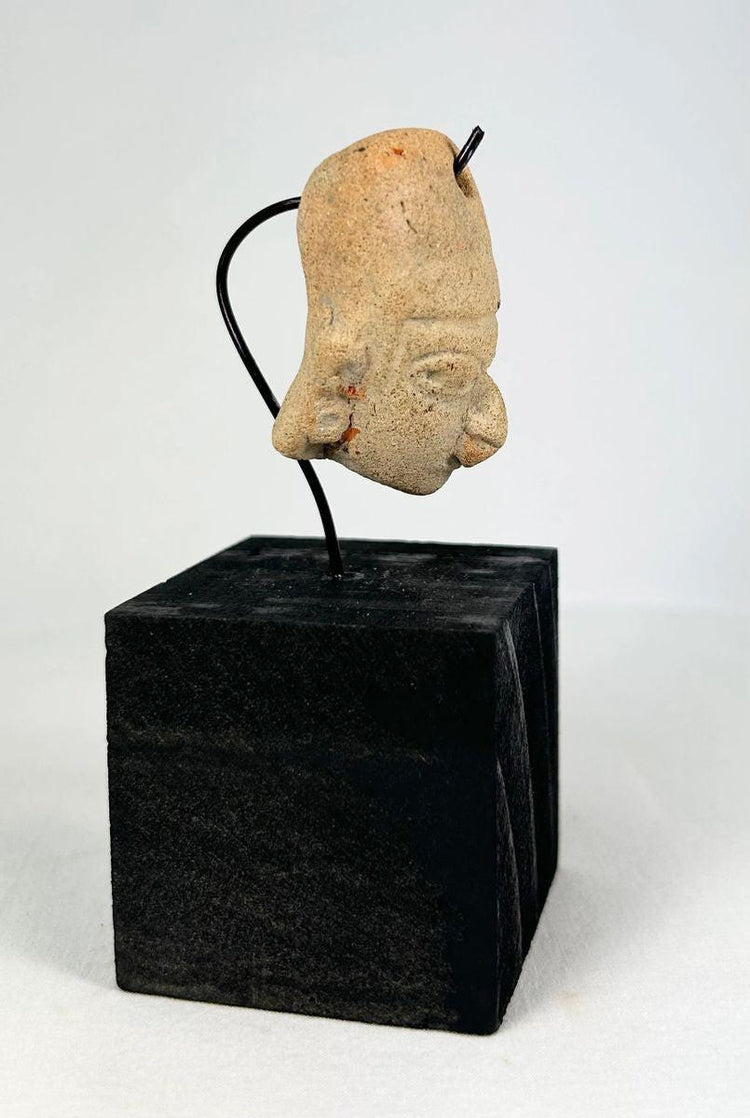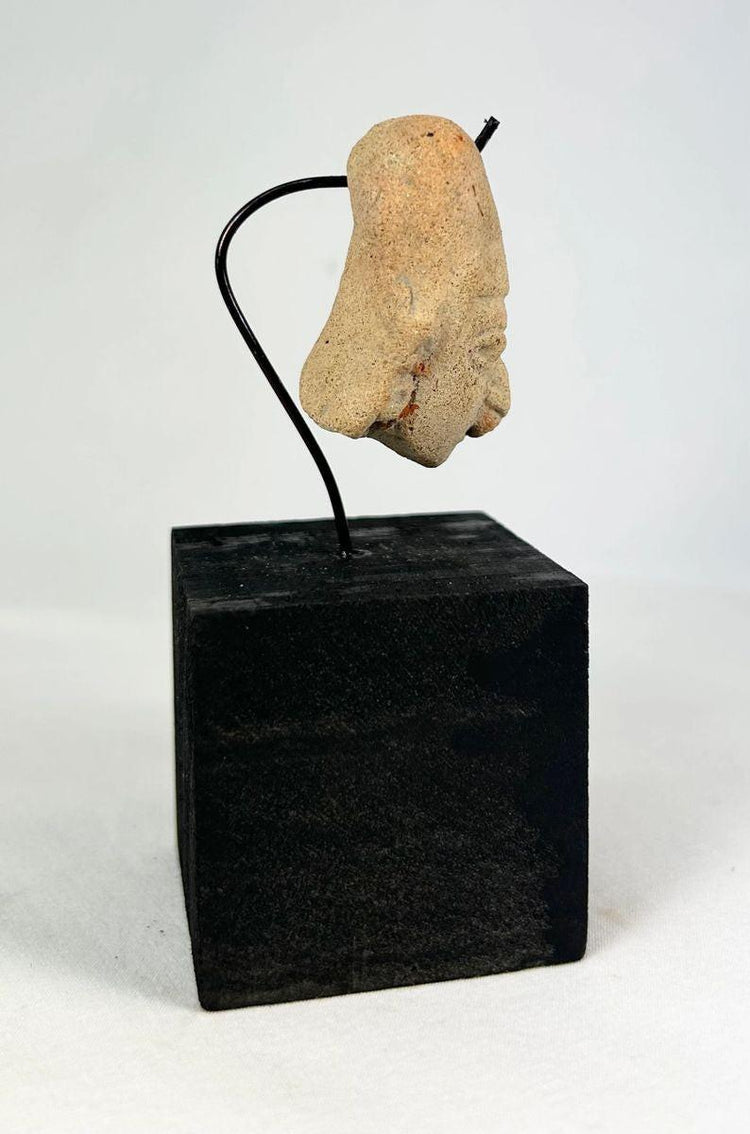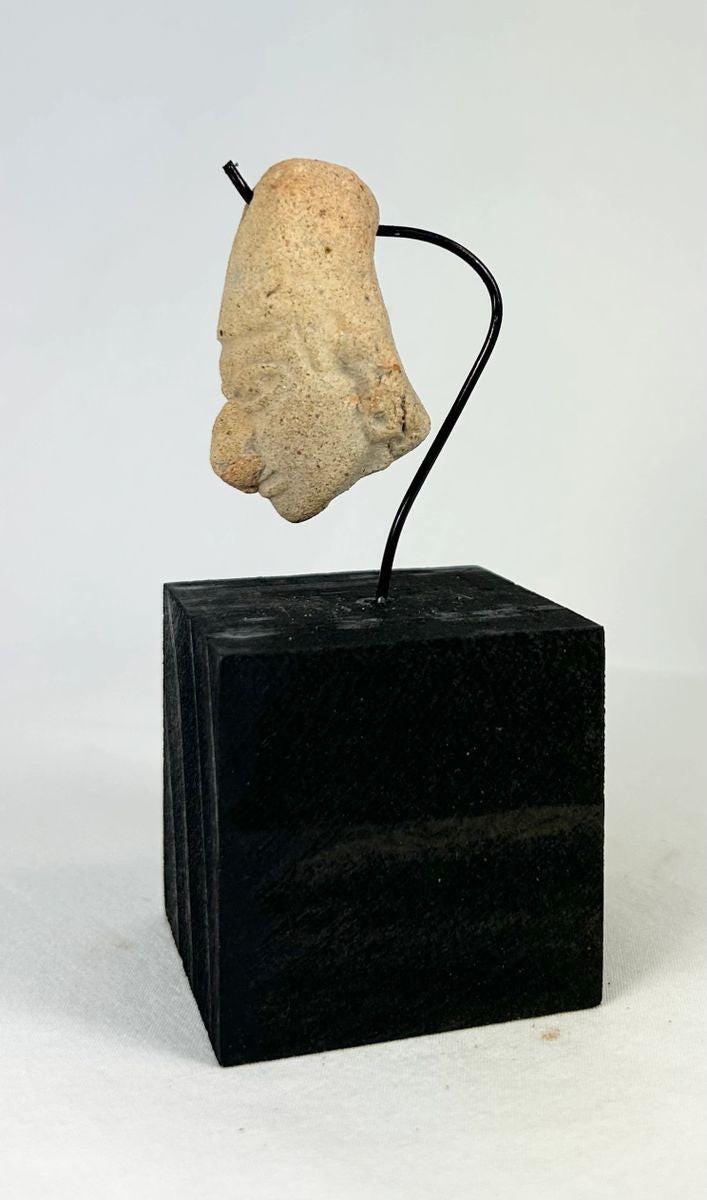Ancient Mesoamerican Clay Amulet Head | Colima or Nayarit Region | 300 BCE–300 CE
Description
More
Less
Historical Context & Origin
Region: West Mexico (Colima/Nayarit) or Gulf Coast (Veracruz), Mesoamerica
Material: Terracotta (fired clay)
Period: Circa 300 BCE – 300 CE
Description
This ancient Mesoamerican terracotta pendant head likely represents an elite individual or spiritual intermediary. Carefully hand-modeled, the head features a stylized angular cap or headdress, deeply incised almond-shaped eyes, a furrowed brow, and a pronounced nose and lips—all characteristic of West Mexican and Gulf Coast sculptural traditions. A vertical perforation through the top of the head indicates that it was intended as a pendant or amulet, likely worn on a cord or affixed to ceremonial garments. The back is smooth and slightly concave, enabling the piece to rest comfortably when suspended. Now mounted on a custom museum-style stand, the figure retains a strong presence imbued with ancestral power.
Features
- Expressive facial features with incised almond-shaped eyes and furrowed brow
- High cylindrical cap or helmet-like headdress
- Original suspension hole drilled vertically through the top
- Stylized anatomical details, including subtle ear protrusions
- Mounted on a custom museum-style stand
Cultural Significance
Pendant heads in terracotta were frequently used in ceremonial and funerary contexts across Mesoamerica. Worn as ornaments or amulets, they often symbolized status, lineage, or a spiritual role. The expressive face suggests ritual significance, possibly embodying divine authority or shamanic identity. Such pendants were interred with the deceased as offerings or worn by shamans and nobility during life, serving both decorative and sacred functions.
Condition
Excellent condition for age. Light surface wear and minor pitting consistent with burial. No major breaks or restorations. Suspension hole intact.
Dimensions (approximate)
Height (with stand): 4.25 in
Width: 2 in
Age
Circa 300 BCE – 300 CE
Description
Historical Context & Origin
Region: West Mexico (Colima/Nayarit) or Gulf Coast (Veracruz), Mesoamerica
Material: Terracotta (fired clay)
Period: Circa 300 BCE – 300 CE
Description
This ancient Mesoamerican terracotta pendant head likely represents an elite individual or spiritual intermediary. Carefully hand-modeled, the head features a stylized angular cap or headdress, deeply incised almond-shaped eyes, a furrowed brow, and a pronounced nose and lips—all characteristic of West Mexican and Gulf Coast sculptural traditions. A vertical perforation through the top of the head indicates that it was intended as a pendant or amulet, likely worn on a cord or affixed to ceremonial garments. The back is smooth and slightly concave, enabling the piece to rest comfortably when suspended. Now mounted on a custom museum-style stand, the figure retains a strong presence imbued with ancestral power.
Features
- Expressive facial features with incised almond-shaped eyes and furrowed brow
- High cylindrical cap or helmet-like headdress
- Original suspension hole drilled vertically through the top
- Stylized anatomical details, including subtle ear protrusions
- Mounted on a custom museum-style stand
Cultural Significance
Pendant heads in terracotta were frequently used in ceremonial and funerary contexts across Mesoamerica. Worn as ornaments or amulets, they often symbolized status, lineage, or a spiritual role. The expressive face suggests ritual significance, possibly embodying divine authority or shamanic identity. Such pendants were interred with the deceased as offerings or worn by shamans and nobility during life, serving both decorative and sacred functions.
Condition
Excellent condition for age. Light surface wear and minor pitting consistent with burial. No major breaks or restorations. Suspension hole intact.
Dimensions (approximate)
Height (with stand): 4.25 in
Width: 2 in
Age
Circa 300 BCE – 300 CE
You May Also Like




























